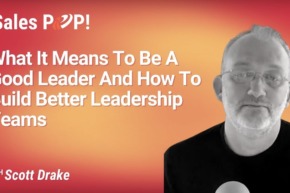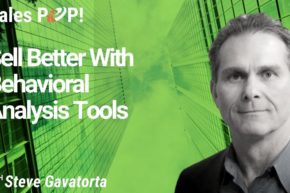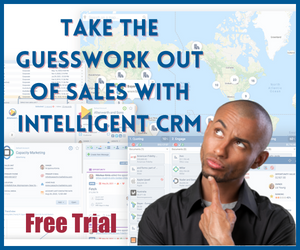In the ever-evolving world of digital marketing, staying ahead of trends, technology, and consumer behavior is both a challenge and an opportunity. In a recent episode of the Expert Insight Interview, John Golden sat down with Kym, CEO and founder of Always On Digital, to discuss the nuanced realities of digital marketing today. Drawing from Kym’s decades of experience and her agency’s award-winning campaigns, this conversation offers a roadmap for businesses and marketers seeking to optimize their digital strategies.
Below, we break down the main themes and actionable tips from the interview, providing in-depth guidance for navigating the complexities of digital marketing in 2024 and beyond.
1. The Evolution of Digital Marketing: From Clicks to Connected TV
Key Insight:
Digital marketing has transformed dramatically since the early 2000s. What began as a race for cost-per-click efficiency has become a sophisticated ecosystem spanning programmatic TV, digital out-of-home, influencer marketing, and AI-driven campaigns.
Nuances to Consider:
- Fraud is Persistent, but Evolving:
Fraudulent activity was an issue in the early days and remains so, but the tactics and platforms have changed. Marketers must stay vigilant and use advanced tools to detect and prevent fraud. - Roller Coaster of Technology:
The rise of AI-generated creative content sometimes feels like a step backward, with less authentic human touch. Striking the right balance between automation and authenticity is crucial.
Actionable Advice:
- Regularly audit your ad placements and traffic sources for signs of fraud.
- Test new technologies, but don’t abandon proven fundamentals—human creativity and strategic thinking remain irreplaceable.
2. Aligning Brand Personality with the Right Channels
Key Insight:
Not every brand belongs on every platform. The most successful campaigns are those that authentically match the brand’s personality to the platform’s culture and audience.
In-Depth Breakdown:
- Assess Your Brand’s True Identity:
- Is your brand playful, edgy, traditional, or authoritative?
- For example, a conservative B2B brand may not thrive on TikTok, which favors humor and trend-driven content.
- Audience Mapping:
- Go beyond assumptions. Your primary audience may not be the only one worth targeting—look for secondary and tertiary segments.
- Use data and research to find where your audience actually spends time online.
- Platform-Objective Fit:
- Different platforms excel at different goals:
- Google Search: Best for high-intent actions (purchases, downloads).
- Social Media: Great for awareness, engagement, and community-building.
- Connected TV: Ideal for broad reach and brand storytelling.
- Different platforms excel at different goals:
Actionable Advice:
- Conduct a brand audit to clarify your personality and values.
- Map your audience’s digital journey using analytics and surveys.
- Prioritize platforms that align with both your brand and your business objectives.
3. Operational Readiness: Supporting Your Marketing Ambitions
Key Insight:
Ambitious marketing can backfire if your business isn’t operationally prepared to handle increased demand or engagement.
Nuances to Consider:
- Resource Allocation:
- Edgy or viral campaigns often generate strong reactions. Do you have the team to monitor and respond to comments, reviews, and customer inquiries?
- Can your fulfillment and customer service teams handle a surge in orders or leads?
- Consistency Across Touchpoints:
- A disconnect between marketing promises and actual service (e.g., slow response times, poor fulfillment) damages brand trust.
Actionable Advice:
- Before launching a major campaign, stress-test your operations—customer service, logistics, and digital infrastructure.
- Set up monitoring systems for social media and review platforms to respond quickly to feedback.
- Align your marketing, sales, and operations teams to ensure a seamless customer experience.
4. The Customer Experience: Beyond Marketing Silos
Key Insight:
Marketing, sales, and customer service are not isolated silos. Every touchpoint shapes the customer’s perception of your brand.
In-Depth Breakdown:
- Holistic Brand Experience:
- Fast, error-free websites, responsive customer service, and consistent messaging are all part of the brand promise.
- A premium product with subpar support creates cognitive dissonance and erodes loyalty.
- Feedback Loops:
- Use customer feedback to identify gaps between marketing and reality.
- Negative reviews from unfulfilled promises can have long-term consequences.
Actionable Advice:
- Regularly review the entire customer journey, from ad click to post-purchase support.
- Implement cross-functional teams to ensure alignment and accountability.
- Use customer satisfaction surveys and NPS (Net Promoter Score) to monitor experience quality.
5. AI in Marketing: Opportunities and Pitfalls
Key Insight:
AI is a powerful tool for campaign optimization and creative ideation, but it’s not a substitute for expertise and strategic thinking.
Nuances to Consider:
- AI for Optimization:
- Platforms like Google and Facebook use AI to optimize ad delivery, targeting, and even creative elements.
- However, these systems can make changes (e.g., adding keywords, altering creative) without explicit approval, risking brand misalignment.
- AI for Ideation:
- AI can help brainstorm content ideas or refine plans, but human oversight is essential to ensure relevance and accuracy.
- Foundational Knowledge is Critical:
- Over-reliance on AI without understanding marketing fundamentals can lead to poor decisions and wasted budgets.
Actionable Advice:
- Regularly audit your campaigns for AI-driven changes and maintain manual controls where necessary.
- Use AI as a supplement, not a replacement, for strategic planning and creative development.
- Invest in ongoing education for your team to stay current with both AI tools and marketing best practices.
6. Navigating Platform Proliferation and Audience Targeting
Key Insight:
With an overwhelming number of platforms and conflicting advice, it’s easy to spread resources too thin or miss where your audience truly engages.
In-Depth Breakdown:
- Go Where the Conversation Is:
- Sometimes, unconventional platforms (e.g., X/Twitter for utility app downloads) outperform the obvious choices because that’s where relevant discussions are happening.
- Stay Current with Audience Preferences:
- Don’t assume your audience’s habits mirror your own. For example, high school and college students may prefer Spotify over Pandora, which can inform audio ad placements.
- Test and Learn:
- Pilot campaigns on new platforms, measure results, and iterate based on data.
Actionable Advice:
- Conduct regular audience research, including surveys and focus groups, to stay updated on platform preferences.
- Be open to testing new channels, especially when there’s evidence of active, relevant conversations.
- Use analytics to track performance and reallocate budget to the highest-performing platforms.
7. Connected TV: The Next Frontier
Key Insight:
Connected TV (CTV) is rapidly growing, offering new opportunities for targeted, trackable advertising beyond traditional cable.
In-Depth Breakdown:
- What is Connected TV?
- CTV refers to streaming television content via internet-connected devices (e.g., Roku, Amazon Fire Stick, smart TVs), bypassing traditional cable.
- Advantages:
- Enhanced targeting and measurement capabilities.
- Ability to match ad exposure to in-store visits and sales data.
- Challenges:
- Platform fragmentation (Peacock, Paramount+, Netflix, etc.) complicates media buying.
- Ad fraud remains a concern, requiring robust verification tools.
Actionable Advice:
- Explore CTV as part of your media mix, especially for brand storytelling and broad reach.
- Use event-based targeting (e.g., Olympics, major sports) to maximize impact.
- Invest in fraud detection and measurement solutions to ensure campaign integrity.
8. Case Studies: Unconventional Wins
Key Insight:
Success often comes from challenging assumptions and being willing to try new approaches.
Examples from Kym:
- Utility App Downloads via X (Twitter):
- Instead of defaulting to Google Ads, Kym’s team identified active energy-related conversations on X, leading to a highly successful campaign that exceeded download goals.
- Audio Advertising for College Applicants:
- By consulting with high school students, a client learned that Spotify was the preferred platform, guiding
Our Host
John is the Amazon bestselling author of Winning the Battle for Sales: Lessons on Closing Every Deal from the World’s Greatest Military Victories and Social Upheaval: How to Win at Social Selling. A globally acknowledged Sales & Marketing thought leader, speaker, and strategist, he has conducted over 1500 video interviews of thought leaders for Sales POP! online sales magazine & YouTube Channel and for audio podcast channels where Sales POP! is rated in the top 2% of most popular shows out of 3,320,580 podcasts globally, ranked by Listen Score. He is CSMO at Pipeliner CRM. In his spare time, John is an avid Martial Artist.








Comments